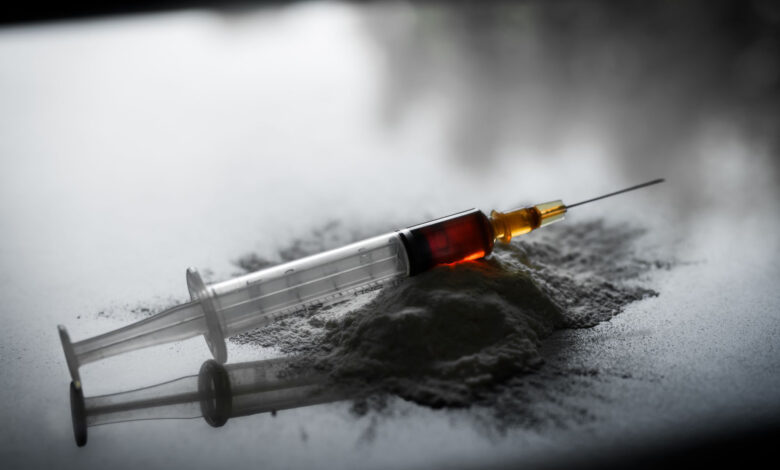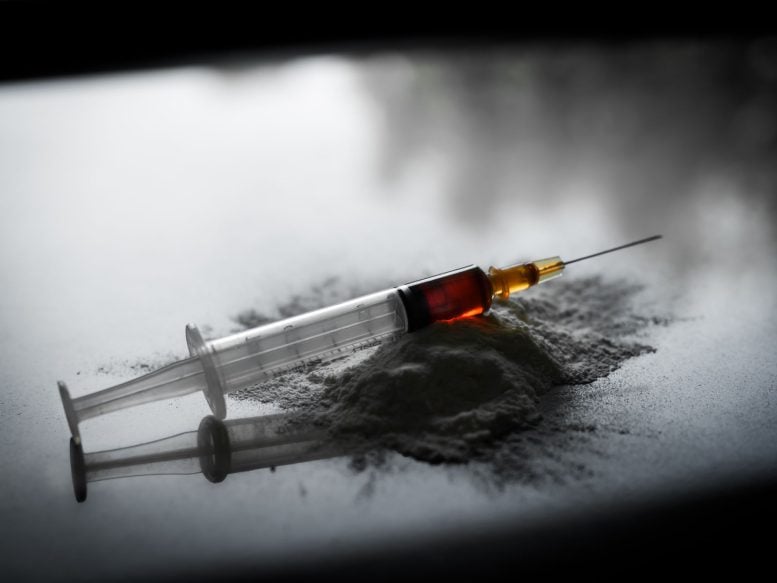Powerful Veterinary Drug With Horrific Side Effects Has Infiltrated the UK’s Illicit Market


Xylazine, a veterinary tranquilizer with severe side effects, has infiltrated the UK’s illegal drug market, often mixed with opioids like heroin or fentanyl, and even detected with stimulants like cocaine. This emergence poses significant risks beyond traditional opioid users, evidenced by a related death and ongoing research highlighting its expanding threat within the UK drug scene.
Xylazine, a potent animal tranquilizer, has entered the UK drug scene, causing significant health risks and a recorded death. Experts call for preventive measures and harm-reduction strategies to address this emerging threat.
Xylazine, a powerful animal tranquiliser linked to horrific side effects, is now widespread in the UK illicit drug market.
Xylazine is often combined with potent opioids like heroin or fentanyl, a frequent pairing in the United States. Additionally, it has been found without opioids, mixed with stimulants such as cocaine, and in products falsely marketed as codeine and diazepam (Valium) tablets, as well as in THC vapes.
Researchers warn the wider population of people who use drugs beyond heroin users will be exposed to xylazine’s harms.
The findings, published in Addiction, come after the team from the National Programme on Substance Abuse Deaths at King’s College London reported on the death of a 43-year-old man from Solihull, West Midlands, in May 2022. This is the first death outside North America and the first in the UK to be linked to xylazine use.
Xylazine is a non-opioid sedative, painkiller, and muscle relaxant used in veterinary medicine as a tranquilizer for animals. The drug – known as ‘tranq’ or ‘tranq dope’ when cut with heroin and fentanyl – is causing widespread problems in the United States, as it can dangerously lower breathing and heart rate. If injected directly into the user’s bloodstream this reduces the need to re-dose, but this can cause large open skin ulcers to form.
Research and Recommendations
Researchers contacted all toxicology laboratories in the UK to collate evidence of xylazine detections in biological samples. They found the presence of the drug in sixteen people, 11 of whom were fatal. Eleven samples dated from the summer of 2023.
Senior author Dr Caroline Copeland, from King’s College London, said: “We now know that xylazine has penetrated the UK’s illicit drug market. This is cause for alarm as a much wider population of people who use drugs beyond heroin users will be exposed to its harms. We also know that most people who buy heroin will not intend to buy xylazine and this combination increases the risk of overdose. Xylazine was designated an ‘emerging threat’ to the United States and this public health threat is a growing concern for the UK.
“There are three simple measures the UK can introduce to prevent the epidemic of xylazine use that has emerged in the USA. Cheap xylazine test strips should be made available, healthcare providers need to be aware of the signs that chronic skin ulcers are due to xylazine use, and pathologists and coroners should specifically request toxicology testing for xylazine in relevant cases to understand the true prevalence of the drug.”
Co-author Dr Adam Holland, Co-Chair, Faculty of Public Health Drugs Special Interest Group and Clinical Research Training Fellow, University of Bristol said: “The emergence of xylazine in the UK drug market, as well as the proliferation of potent synthetic substances including nitazenes and benzodiazepine analogues is extremely concerning. As levels of adulteration increase and drug-related deaths mount it becomes even more clear that our punitive drug laws are not reducing harm. We need to expand the range of harm reduction interventions available for people who use drugs, including drug checking and overdose prevention centers, to give them the opportunities they need to stay safe.”
Professor Sir John Strang, Head of Addictions at The Institute of Psychiatry, Psychology & Neuroscience at King’s College London and was not involved in the study, said: “We need to be constantly alert to changes in the nature of the illicit drug market, especially as these changes sometimes bring new health complications or challenges. Copeland and her colleagues bring important new information about the appearance of a new drug, xylazine, as a co-drug added to illicit heroin and also apparently as a novel drug on its own. This has required integration of data from different sources (from case reports, from national data-sets and from forensic toxicology) and collaboration across different disciplines and different universities alongside data collection organizations or law enforcement.
“Copeland and colleagues also identify possible changes in public health planning and law enforcement – a good illustration of how science can inform public policy and practice and enable valuable impact.”
Reference: “Broad evidence of xylazine in the UK illicit drug market beyond heroin supplies: Triangulating from toxicology, drug-testing and law enforcement” by Caroline S. Copeland, Kathleen Rice, Kirsten L. Rock, Simon Hudson, Peter Streete, Alexander J. Lawson, Lewis Couchman, Adam Holland and Stephen Morley, 09 April 2024, Addiction.
DOI: 10.1111/add.16466



